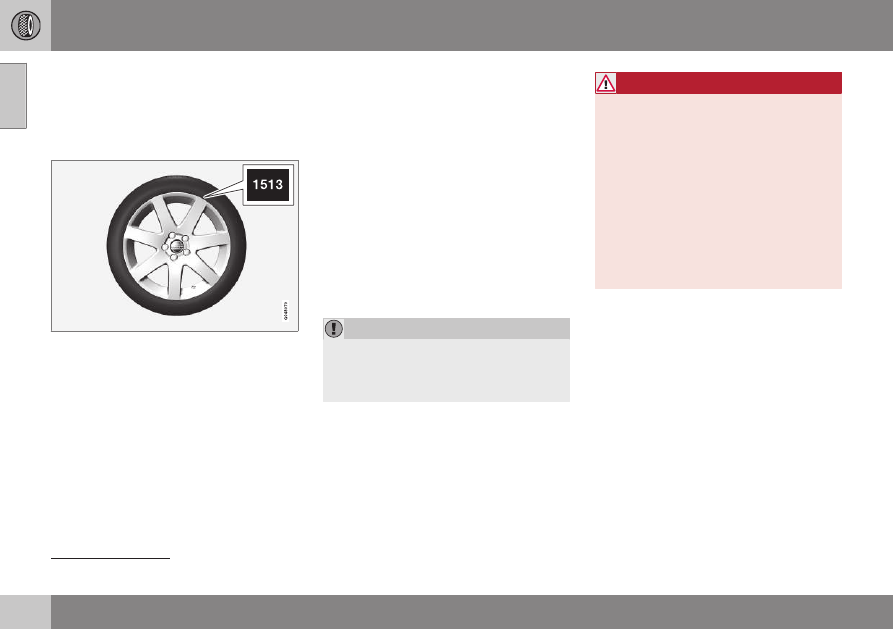Volvo S60 Inscription (2016 year). Instruction - part 15

09 Wheels and tires
09
250
Tires – storage and age
When storing complete wheels (tires mounted
on rims), they should be suspended off the
floor or placed on their sides on the floor.
New Tires
Remember that tires are perishable goods. As
of 2000, the manufacturing week and year
(Department of Transportation (DOT) stamp)
will be indicated with 4 digits (e.g., 1513
means that the tire illustrated was manufac-
tured during week 15 of 2013).
Tire age
Tires degrade over time, even when they are
not being used. It is recommended that tires
generally be replaced after 6 years of normal
service. Heat caused by hot climates, fre-
quent high loading conditions or Ultra Violet
(U.V.) exposure can accelerate the aging
process. The temporary spare
1
should also
be replaced at 6-year intervals, even if it has
never been used.
A tire's age can be determined by the DOT
stamp on the sidewall (see the illustration).
A tire with e.g., visible cracks or discoloration
should be replaced immediately.
Storing wheels and tires
When storing completes wheels (tires moun-
ted on rims), they should be suspended off
the floor or placed on their sides on the floor.
Tires not mounted on rims should be stored
on their sides or standing upright, but should
not be suspended.
Tires should preferably be stored in a cool,
dry, dark place, and should never be
stored in close proximity to solvents, gaso-
line, oils, etc.
WARNING
•
The wheel and tire sizes for your Volvo
are specified to meet stringent stability
and handling requirements. Unap-
proved wheel/tire size combinations
can negatively affect your vehicle's
stability and handling.
•
Any damage caused by installation of
unapproved wheel/tire size combina-
tions will not be covered by your new
vehicle warranty. Volvo assumes no
responsibility for death, injury, or
expenses that may result from such
installations.
Related information
•
Tire inflation – pressure table (p. 260)
•
•
•
Changing a wheel – direction of rotation
•
Tires – tread wear indicator (p. 251)
1
Option or accessory on some models